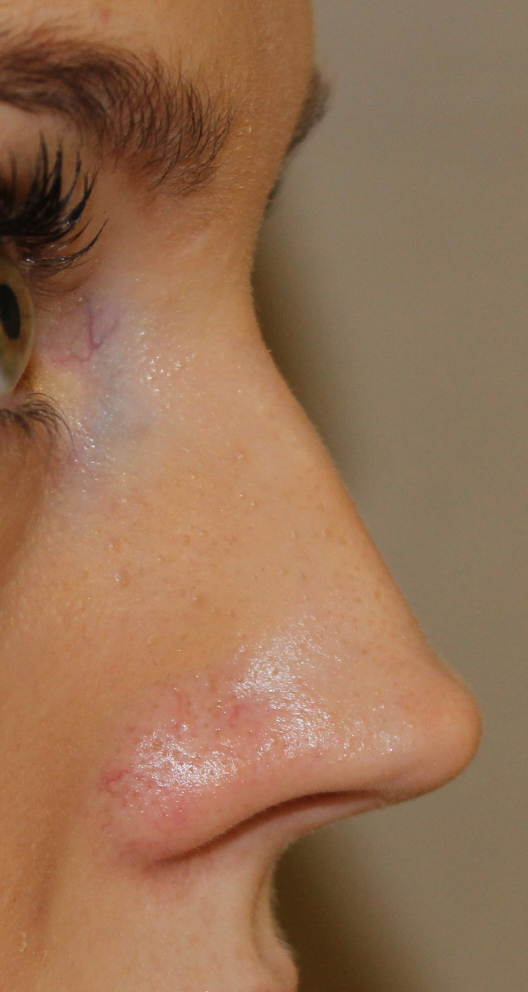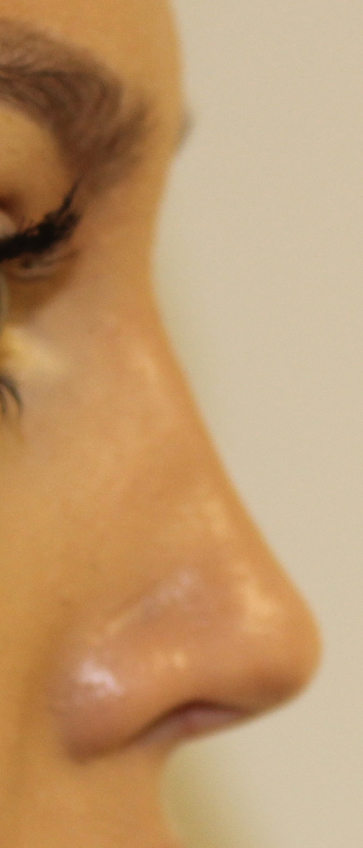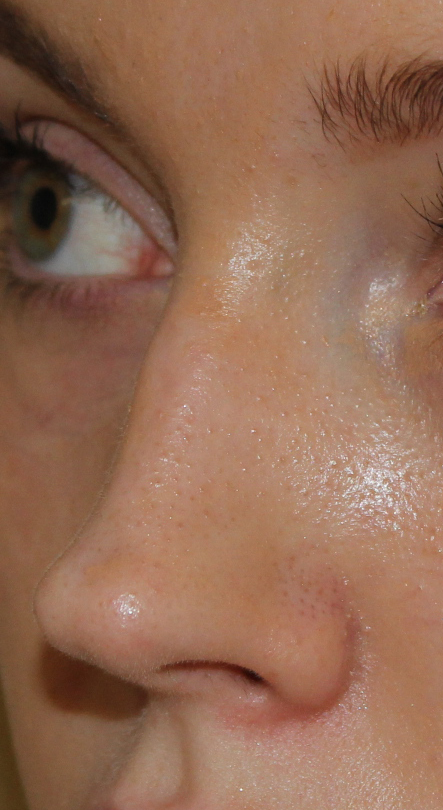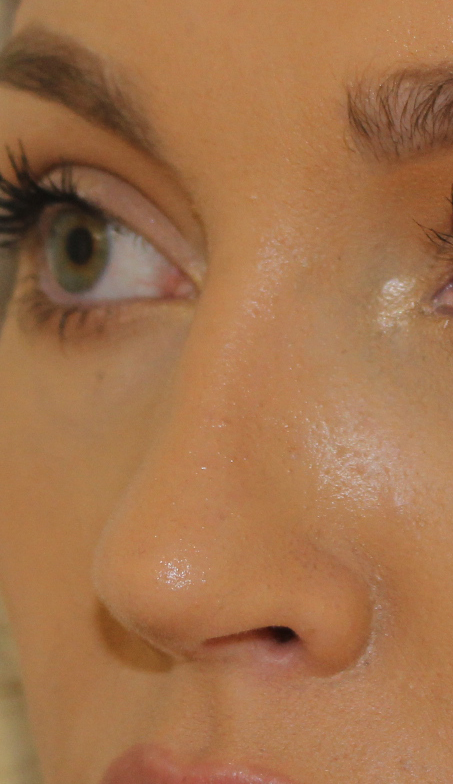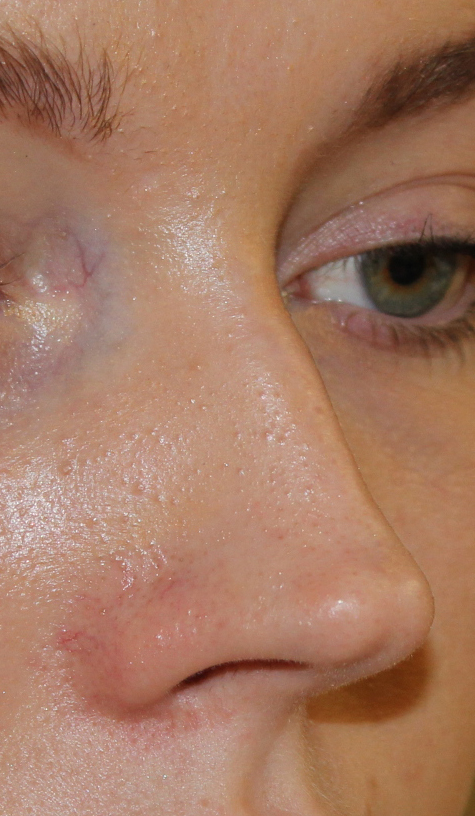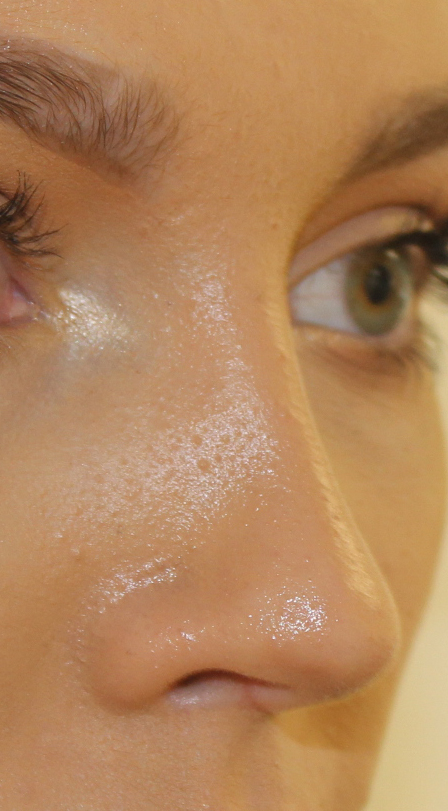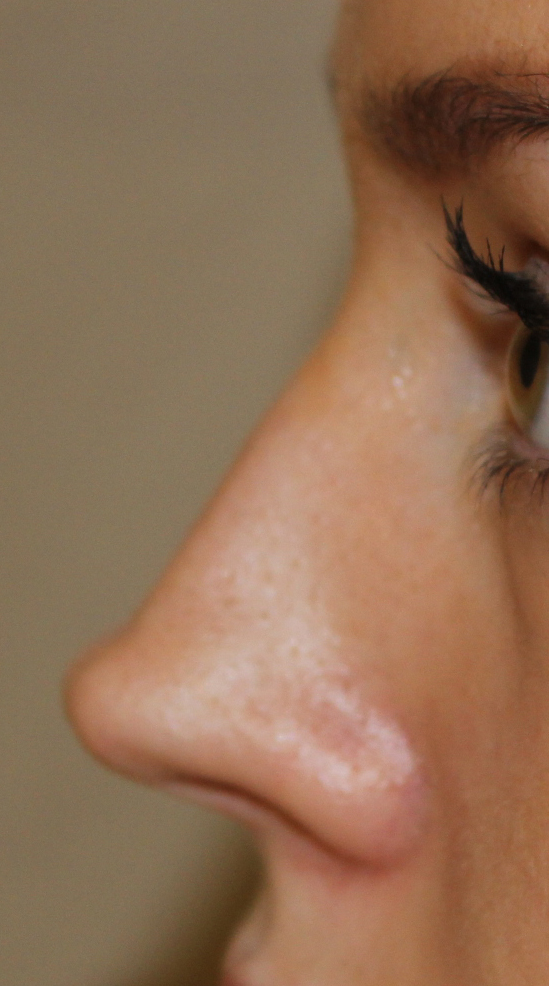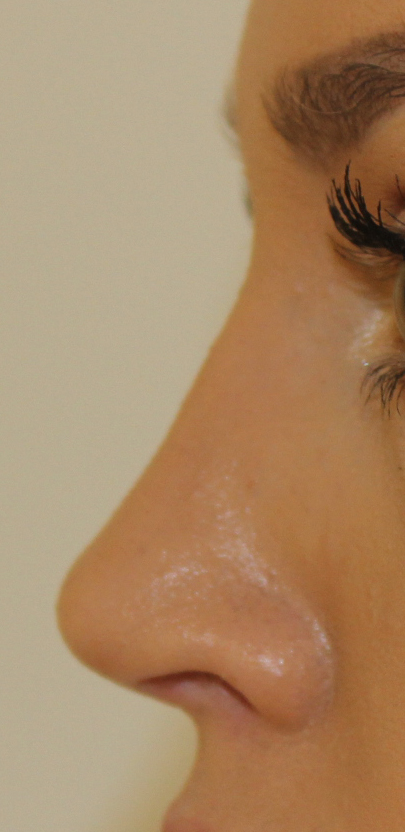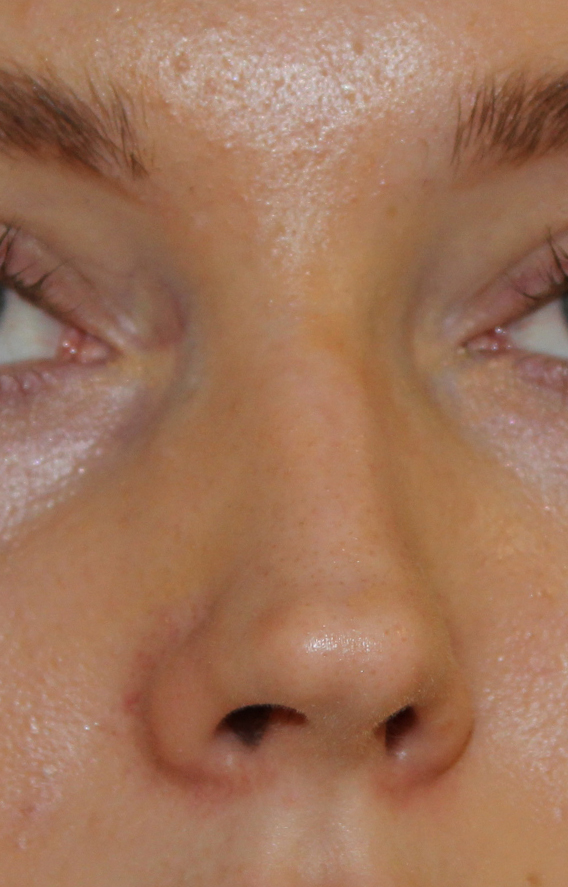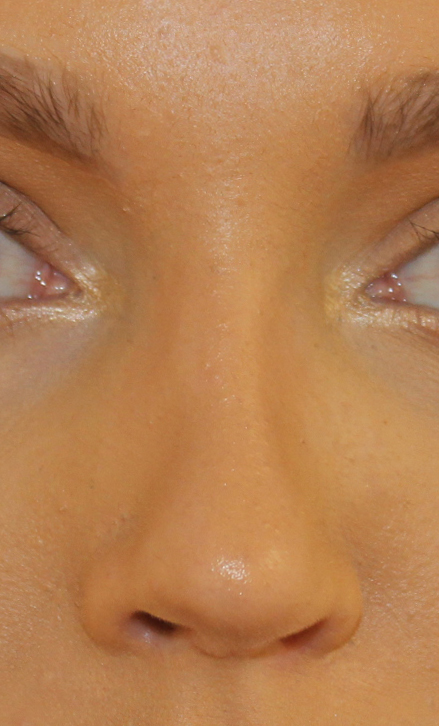Rhinoplasty
Rhinoplasty is more commonly referred to as a ‘nose job’ and this involves adjusting the shape or size of the nose with the aim of improving its look.
What Is Nose Reshaping Surgery?
A nose job can be a complex procedure. There could be many different rhinoplasty procedures that make up a complete nose job. Overall, nose reshaping surgery is an operation that changes the shape and size of the nose by altering several parts of the nose such as the tip, bridge, nostrils or the angle between the upper lip and nose. If you feel as if your nose is too big or has been damaged in the past, you might consider getting nose reshaping surgery in order to acquire the shape that you want.
Those who choose to undergo this type of surgery tend to for aesthetic changes as a way to improve the overall look of their nose and face, but rhinoplasty can also be performed to improve breathing. One of the main reasons why people consider getting rhinoplasty in Manchester is because their septum is deviated. A deviated septum can cause many problems, such as nasal obstruction, snoring, impacted sleep and bad breathing. However, a nose job can alleviate these symptoms and improve your quality of life.
Before deciding on getting nose reshaping surgery, you should carefully consider the reasons why you want to have the surgery. If you want to get rhinoplasty in Manchester, you should ensure that you are fully informed and prepared for the surgery.
How Long Does Rhinoplasty Last?
Unlike other types of plastic surgery procedures, the rhinoplasty procedure is permanent and needs no follow-up surgeries. The rhinoplasty procedure involves nose reshaping by removing bones and cartilage, changing the appearance of your nose for good. If you have a deviated septum, a nose job can fix your breathing issues permanently. It’s important that you want a nose job, and are fully aware of the consequences before you decide to get nose reshaping surgery.
What To Expect With A Nose Job Consultation
At UK Aesthetics, we want all of our consultations to be open and honest. This is so we can provide only the best expert advice to patients seeking rhinoplasty in Manchester. Make sure you come to the nose job consultation certain about your desired outcomes, so we can help create an amazing treatment plan for you. During this informal discussion, we’ll go extensively through your surgery expectations and medical history, and you’re also welcome to ask questions about any concerns you may have regarding nose reshaping surgery.
We are passionate about the wellbeing of our patients in Manchester, so ask as many questions about the rhinoplasty procedure as possible. If you want to see rhinoplasty case studies so you can see our surgeon’s previous work, you should also ask in the consultation. The outcome of your nose job consultation will depend on how honest you are regarding your lifestyle, health and desires. If you do not have the right lifestyle and health for a rhinoplasty procedure, we may decide to cancel the treatment plan. This decision will be made for your safety, as protecting our patients in Manchester and beyond is at the core of our ethos.
How Do I Prepare For Surgery?
Once you have booked your rhinoplasty consultation in Manchester, we will go through your personalised treatment plan. During the consultation, you’ll have the ability to work with the surgeon to create a personalised plan to achieve your surgery expectations.
However, you may also need to make certain lifestyle changes in order to prepare adequately for the nose reshaping surgery. If you don’t make these changes and prepare the best way you can, you may find that certain complications could arise following your surgery.
Before you go down for nose reshaping surgery, please follow these steps:
- For a smooth recovery that will reduce complications, stop smoking around six weeks before the surgery. Smoking can cause many complications following surgery. Smoking impacts regular blood flow, so your incision scars could also become infected after the rhinoplasty procedure if you don’t stop smoking. Your nose reshaping surgery may be cancelled if you don’t quit, so take the steps to stop smoking today!
- Your anaesthesia will perform best if you avoid taking any aspirin. If the effectiveness of your anaesthetic is impacted, it could have serious ramifications for recovering from a nose job.
- You should also avoid herbal supplements or anti-inflammatory products, as they can interfere with your anaesthesia. If you want a smooth recovery, make sure to avoid these products.
Although you are likely to experience some form of soreness after the surgery – this is expected and usual with any cosmetic procedure. At our Manchester clinic, we care about the wellbeing of our rhinoplasty patients, and we’ll provide advice on how to manage and treat any pain. To avoid any complications from the rhinoplasty procedure, it’s important to arrange a close relative or friend to collect you after the surgery. Nose job recovery can also be aided by taking two weeks off your work and resting at home, to not risk any complications or put stress on your body.
What Does The Procedure Involve?
The rhinoplasty Manchester clinics typically offer will be expected to take around one to two hours and use general anaesthetic to help numb the tenderness during the surgery and help you to feel more comfortable.
Every procedure is assessed individually and we can better determine how we can change the shape of your nose by examining how much needs to be removed or added, its structure and the cartilage available. For smaller nose reshaping changes, there is the ability to take the cartilage from deeper inside the nose or the ear, and more dramatic adjustments tend to involve the cartilage being taken from the rib.
We can reduce or adjust the cartilage and bone beneath the skin to make changes by making an incision inside the nose base between the nostrils which provide easier access.
During an ‘open’ rhinoplasty, the surgical cut is made across the columella to gain sufficient entry to the cartilage and bone. The wounds are then closed, and steristrips are applied before a splint is inserted and secured with tape to help support the recovery and results after your procedure.
In contrast, a ‘closed’ rhinoplasty procedure can be completed efficiently entirely through the nostrils to help cater to your surgical needs.
Case Studies
Aftercare Following a Rhinoplasty Procedure
After rhinoplasty procedure, it is normal to feel bruised and sore. However, we can use analgesia to aid the discomfort you may experience and improve your recovery. Patients often feel pressure on their face once they have had their nose job, and they will also feel some discomfort around the surgical area. However, our nose job specialist surgeons will give you as much advice and help for managing this pain as possible.
Arranging someone to collect you after the rhinoplasty procedure can also prevent any complications occurring. To ensure your results can be as positive as possible, we may supply you with dressings for your nose so it is protected, and if we provide you with nasal packs you can expect to have these removed the next day. If you want the results of your nose reshaping surgery to be effective, it’s important that you follow these crucial steps. Make sure you also follow the advice set out by your surgeon at the nose job consultation at our Manchester clinic.
A build-up of fluid at the back of the throat can occur following the first two weeks of your surgery as your nose will be blocked, but this will be expected during the first stages of your recovery and will improve over time. If you have any questions about what you’ll experience during nose job recovery, make sure that you ask your surgeon so you can remain fully informed.
To help your rhinoplasty recovery, it’s advised you:
- Keep your head upright so blood can flow to where it’s required and repair tissue.
- Keep your nose as dry as possible so your rhinoplasty results aren’t interfered with.
- Try not to sneeze as this is likely to be extremely painful, but can also alter the amends made during the surgery and change your nose job results.
- Avoid strenuous activities so you can gain the best possible results by avoiding risky situations.
- By avoiding sports for at least 6 weeks, you can reduce the risk of your nose being damaged, which could alter your nose job results.
- Try not to blow your nose so your nose can naturally recover and avoid complications.
- You should also avoid the sun, as UV rays can damage your skin’s pigmentation, which is problematic after a cosmetic procedure (such as a nose job.) Healing skin is more susceptible to sun damage.
All of our rhinoplasty patients in Manchester will be seen in the dressings clinic a week after the nose shaping procedure, to ensure your recovery is as smooth as possible. You will probably have to spend 1-2 nights in The Alexandra Hospital in Manchester, which is one of the leading hospitals in the UK. After two weeks, most of the facial swelling following the rhinoplasty procedure should calm down, allowing you to attend social events and leave the home. After six weeks, your bones and cartilage should have healed to the point where you can resume vigorous exercise.
Risks and Complications of Nose Reshaping Surgery
It’s important to remember that our team is extremely experienced in what they do and the majority of treatments are completed perfectly. Many experienced surgeons on the team specialise in rhinoplasty, and have performed nose job procedures to satisfied patients all around the world. However, with any cosmetic procedure there are still complications to be aware of which can ensure you’re prepared.
Common complications after a nose job that you should be aware of include headaches, bruising and swelling, but these are natural to experience after nose reshaping surgery and any cosmetic surgery. More uncommon issues are light nose bleeds, stiffness and numbness of the nose, persistent nose bleeds, infection and delayed healing. All potential risks following the rhinoplasty procedure will be discussed in great detail during your first consultation, so you’re well aware of what they could be and how you can best prevent it.
Any plastic surgery can have complications or risks associated with it, but there are some severe ones that are associated with nose jobs. Rare complications from nose reshaping surgery can include permanent breathing difficulty, cartilage damage, or heavy nosebleeds. Just like any other cosmetic surgery, the rhinoplasty procedure can rarely result in infections, excessive bleeding, blood clots, or allergic reactions to the anaesthetic. If you experience any of these following the rhinoplasty procedure in Manchester, make sure that you seek medical assistance immediately.
Are You Looking To Get Rhinoplasty Procedure in Manchester?
You may need to consider a lot of factors before you commit to having nose reshaping procedures. Here at UK Aesthetics, we are happy to assist any of our patients by providing great information and advice on nose jobs, and all the types of plastic surgery that we offer. If you’re seriously considering having a rhinoplasty procedure in Manchester with us, please contact us today to book your consultation!
